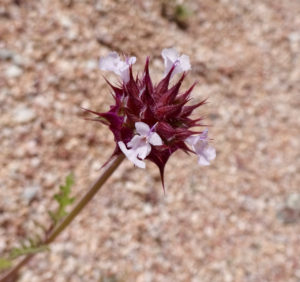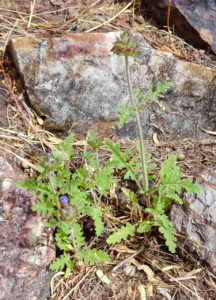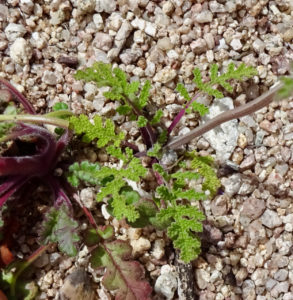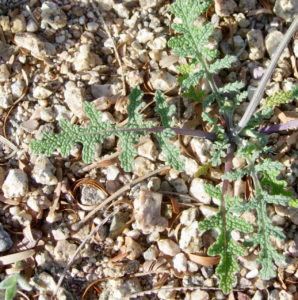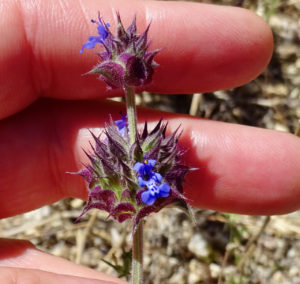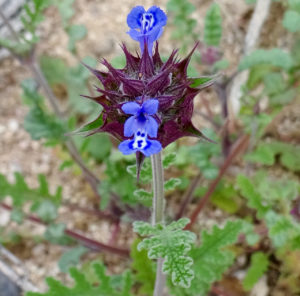Chia
Salvia columbariae
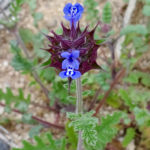
About the Plant
Chia is a small, spring-flowering annual with an unusual ball-on-a-stick flower cluster. Native to the desert southwest, chia usually blooms March into April. The small seeds were harvested by Native Peoples and used to make food, drink, and medicine.
Chia survives on natural rainfall and reseeds each year. No care is needed other than to let the fruit mature and release seed.
Notes:
- Chia flowers are usually blue-purple, but occasionally a white-flowered plant will appear.
Wildlife value: attracts small insects
More Information
Technical botanical description from SEINet
ID Characteristics
This plant is in the Lamiaceae - the mint family.
Chia is an annual that can grow to about 20 inches. The basal leaves can spread to about a foot. Most of the height is in the flower stalk. The photo above shows several plants.
The leaves of chia, up to 4 inches long, are highly divided and each division is lobed. Most of the leaves are at the base of the plant but there are sometimes a few on the flower stalk.
Near the base of the leaf the divisions are cut nearly to the mid-vein. The veins are recessed into the leaf surface, making it look like the surface is covered with many small bumps.
The flowers are held in spherical clusters, usually over an inch wide, that surround the flower stalk. Often there are two or more clusters giving the plant a balls-on-a-stick appearance. As with many members of the mint family, the flower stalk in four-sided (square). Please click on the photos above to enlarge.
Chia flowers are often sparse, with only a few flowers in the cluster open at the same time. Below each flower is a bract, often purple in color, with a pointed tip. The flowers have two lobes, the upper erect, the lower larger, lobed, often with white markings. Each is no more than half an inch long. The fruit is a nutlet, less than 1/10 of an inch long.
